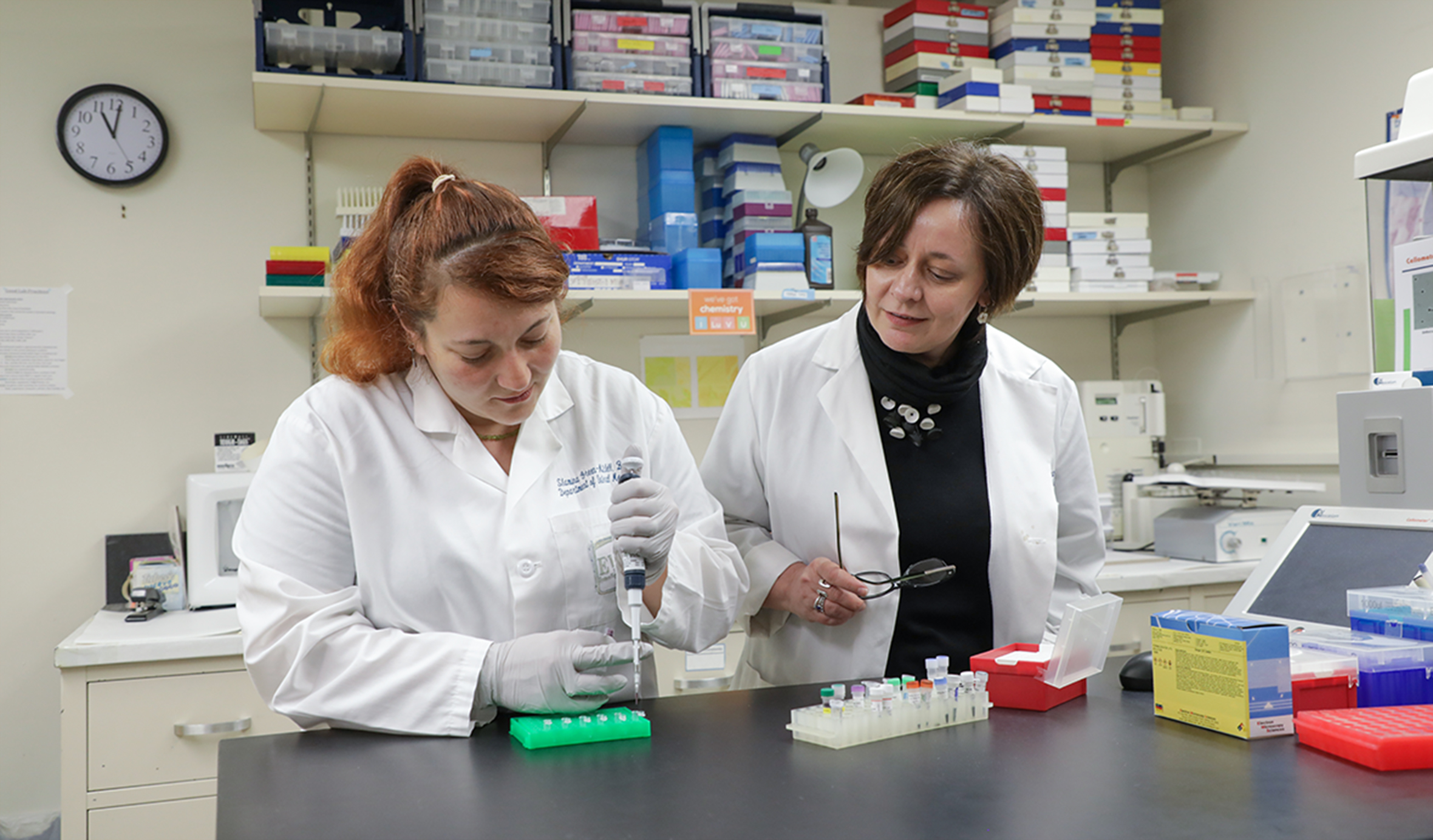Cellular sleuth pursues tiny prey for huge benefits
Imagine a large city with a network of highways, each road bustling with motorists streaming in all directions. Now, imagine that your job is to track each vehicle, discern its cargo, determine which drivers are up to no good and then stop them before they do any harm.
Sound difficult? That’s essentially the task facing scientist Anca Dobrian, PhD, Professor of Physiological Sciences and Master Educator in the Fine Family Academy of Educators at EVMS. But instead of trucks or cars, Dr. Dobrian’s prey are tiny biological elements known as extracellular vesicles. And rather than searching on highways, her pursuit takes place in the human body.
For decades, these vesicles that circulate outside cells were discounted as little more than cellular trash collectors. But recent discoveries demonstrate that extracellular vesicles actually are vital cogs in a complex communications machinery — shuttling messages and biological cargo between cells throughout the body.

Understanding how they work could be the key to unlocking treatments for a range of diseases.
“At any one time there are billions of them circulating in the body,” Dr. Dobrian says. “They have been found in all the body fluids from tears to sweat to urine to blood.”
Dr. Dobrian’s cellular detective work has long focused on finding a way to prevent the unhealthy side effects of obesity — among them diabetes and heart and vascular disease. More recently, her studies have broadened to include liver disease and prostate cancer. And with each disease she adds to her research, Dr. Dobrian has come to believe that vesicles play an important role.
Her recently published research shows that vesicles can carry troublesome inflammatory signatures from dysfunctional to healthy cells and can slow down their metabolism. They also can damage cells by preventing blood vessels from growing and carrying needed oxygen and nutrients to the tissues.
“If the vesicles are damaging, how can we prevent their uptake by the tissue?” she asks. “To do that, we have to understand the mechanism by which they are taken up, and then maybe we can control and inhibit that process.
“I’m hoping there is something in common that explains the unhealthy side effects of obesity,” she says. “And I’m hoping that by looking at these cellular messengers, we can understand that commonality."
If her detective work pays off, understanding those commonalities might help take harmful vesicles off the cellular highway.